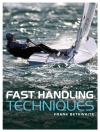This electronic version has been made available under a Creative Commons (BY-NC) open access license. How do new technologies come to be used in sport? This book moves beyond the idea of functionality to explore the many other important factors that athletes and sporting bodies consider throughout the process of adoption. Few would question the difficulty of producing an elite athletic performance. The high level of training, combined with intense competition and pressure from media and sponsors, can be challenging for athletes and sporting bodies to negotiate. This book explores how these factors affect the use of technology in sport, while simultaneously demonstrating the influence of new technologies on sporting practice. Using actor-network theory - an approach common in studies of science and management but seldom applied in this field – it offers readers an inside view into elite sport and the part that technology plays in training, competition and broadcasting.
Sport and technology offers theoretical insights relevant to students and scholars of sport and sociology. It will also be fascinating reading for anyone interested in elite sporting practice in the twenty-first century.
Cuprins
Series editor’s preface Introduction 1 What is technology? 2 Enhancement: which technologies are improved and how? 3 The integration of ‘foreign’ technologies into sporting practice 4 The actor-network of doping 5 The integration of science and medicine into sports training 6 Technologies for judging, umpiring and refereeing 7 Translating performances: the production of sports media broadcasts Conclusion References Index
Despre autor
Roslyn Kerr is Lecturer in Recreation, Sport and Leisure at Lincoln University, New Zealand












